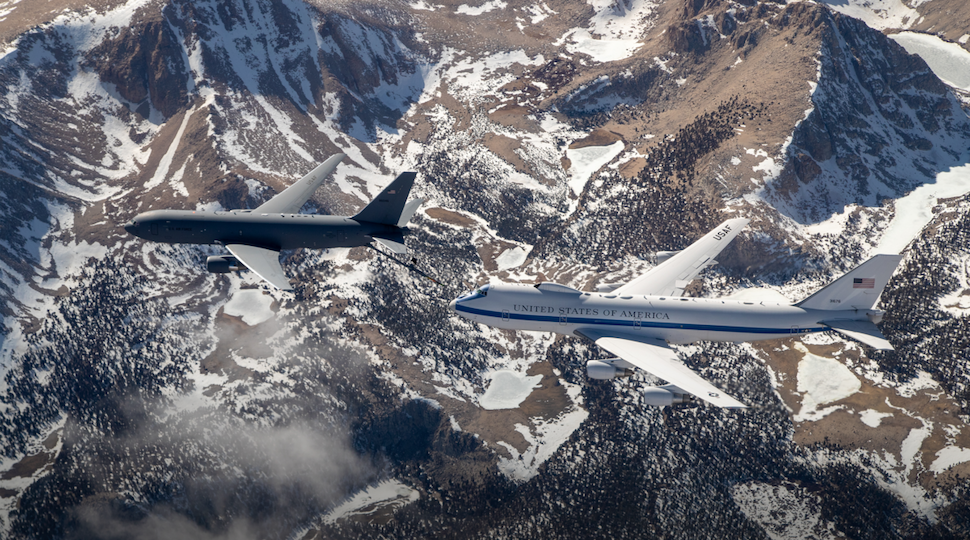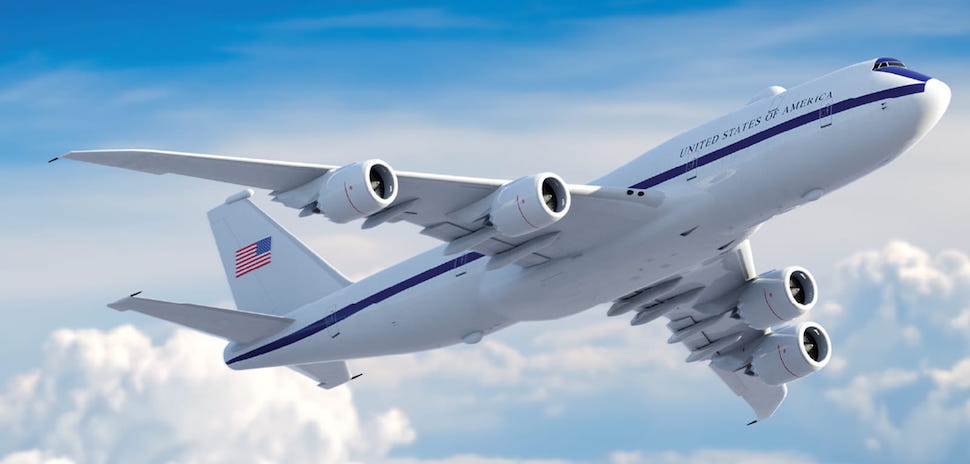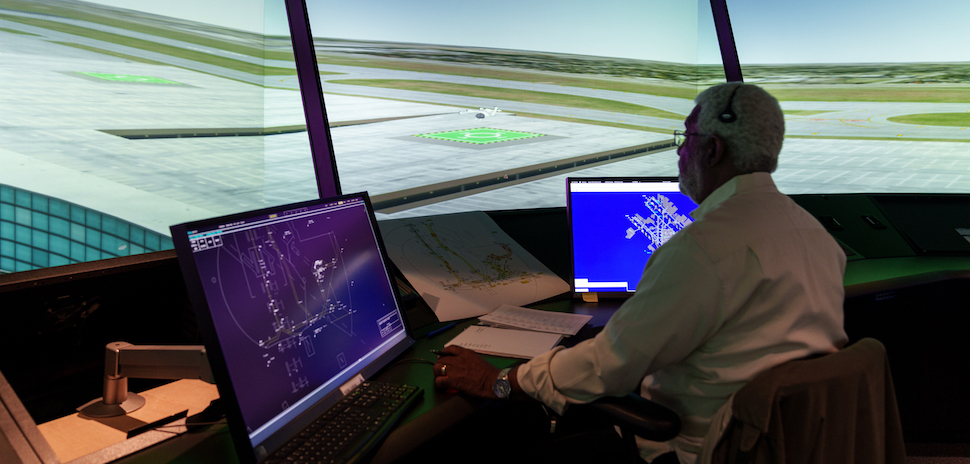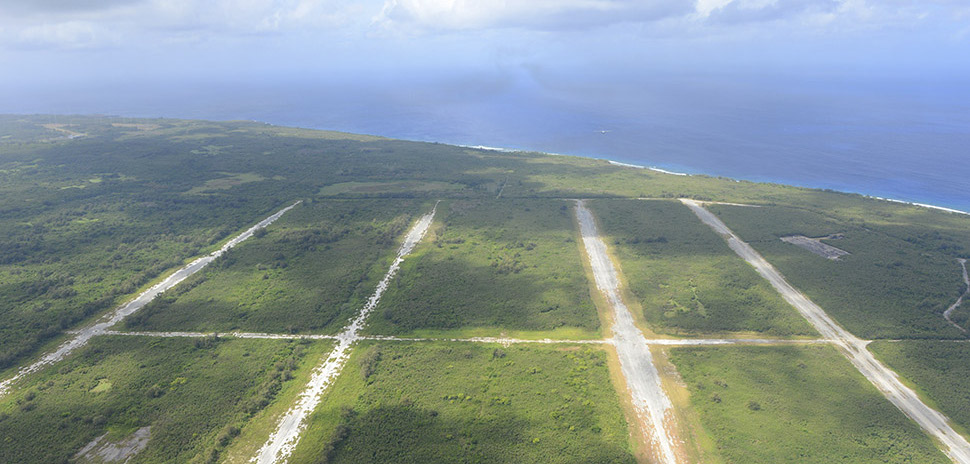They’re called Doomsday planes—high-tech, maxed-out Boeing 747s that the President and top U.S. political and military leaders will be hustled into if the worst happens. As in global thermonuclear war. Or a surprise “decapitation” attack launched by a rival power. Or any number of threats that make the Pentagon brass toss and turn at night.
To help those officials sleep better, a next-generation replacement of the current fleet (which is officially known as E-4B “Nightwatch” aircraft) is now being developed through the U.S. Air Force’s Survivable Airborne Operations Center (SAOC) program. And key work on the project will be done right here in North Texas.
Earlier this month, Nevada-based Sierra Nevada Corp. (SNC) was awarded a $13 billion contract to modernize and deliver a replacement for the U.S. Air Force’s current fleet of four “Nightwatch” aircraft. In a national emergency, the highly specialized aircraft act as an airborne command center for the President, the Secretary of Defense, and Chairs of the Joint Chiefs of Staff to ensure continued critical command, control, and communication under the National Military Command System.

Test pilots and personnel from the 418th Flight Test Squadron, out of Edwards Air Force Base, California, conducted aerial refueling testing with a KC-46 Pegasus, left, and an E-4B Nightwatch, out of Offutt Air Force Base, Nebraska, in the skies over Southern California, on April 4. [U.S. Air Force photo by Christian Turner via SNC]
As part of the project, Collins Aerospace, a subsidiary of RTX (formerly known as Raytheon), has been awarded a “multi-billion-dollar” subcontract to be part of a team led by SNC that will design, develop, and deliver systems and products for the new aircraft.
“We’re bringing together systems from across RTX to help the team deliver an advanced, survivable airborne operations center to the U.S. Air Force,” Conn Doherty, VP and GM of Strategic Solutions for Collins Aerospace, said in a statement. “Our collaboration with SNC leverages the best of our collective engineering and manufacturing expertise. This mission is especially urgent and our decades of experience designing for contested environments is critical to its success.”
This team of “agile and proven leaders” will bring together innovation, speed with discipline, advanced engineering, and on-cost and accelerated deliveries to recapitalize the costly and aging E-4B fleet with next-generation capabilities, Collins Aerospace added.
Charlotte, N.C.-based Collins Aerospace—which has 80,000 employees—said it’s on contract “to deliver multiple products from across the business.” In addition to its location in Richardson, Collins operates a landing systems facility in Haltom City near Fort Worth and a total of more than 30 facilities across the U.S.

Test pilots and personnel from the 418th Flight Test Squadron, out of Edwards Air Force Base, California, conducted aerial refueling testing with a KC-46 Pegasus and an E-4B Nightwatch, out of Offutt Air Force Base, Nebraska, in the skies over Southern California, on April 4. [U.S. Air Force photo by Christian Turner via SNC]
Air Force planning to buy up to 10 next-gen Doomsday planes
According to Aviation Week, the Air Force aims to purchase 8 to 10 aircraft for the next-gen SAOC Nightwatch fleet, and that number might grow.
Why would so many Doomsday planes be needed? Because threats in the 21st century can arrive at hypersonic speed.
“With hypersonics, you may have a 15-min. warning time,” Rep. Don Bacon (R-Neb.) told Aviation Week. “That’s not enough time to get a jet off reliably, in my view. So you’re better off having a 24/7 capacity. Why? Because you want the Russians and the Chinese to know that no matter what they do, we can strike back. And so I think it’s important for deterrence.”
Current version includes command work area, briefing room, ops team work area, and more
According to the U.S. Air Force, the current E-4B aircraft is a militarized version of the Boeing 747-200. It’s a “four-engine, swept-wing, long-range, high-altitude airplane” that’s capable of being refueled in flight. The plane’s main deck is divided into a command work area, a conference room, a briefing room, an operations team work area, a communications area, and a rest area.
An E-4B may seat up to 111 people, the Air Force says in a fact sheet, including a joint-service operations team, Air Force flight crew, maintenance and security component, communications team, and “selected augmentees.”
![]()
Get on the list.
Dallas Innovates, every day.
Sign up to keep your eye on what’s new and next in Dallas-Fort Worth, every day.

































